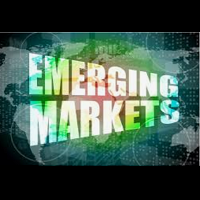Emerging market economic growth picked up speed in the middle of the second quarter of 2024, according to PMI survey data. This marked the fastest expansion in activity in a year, driven by notable improvements in both the manufacturing and service sectors. Indicators pointing to future trends suggest that this expansion is likely to continue in the near term, with new business growth reaching its highest pace since May of the previous year.
Despite the growth, emerging markets faced intensifying cost pressures. Although the rate of cost inflation was less severe compared to developed markets, average selling prices in emerging markets increased more rapidly. This trend is noteworthy as sustained price pressures, especially in manufacturing, could contribute to higher global inflation.
The PMI surveys, conducted globally by S&P Global, highlighted that emerging markets collectively expanded at the fastest pace in 12 months. The GDP-weighted Emerging Market PMI Output Index increased to 54.4 in May from 53.6 in April, extending the expansion streak to 17 months. In tandem with improvements in developed markets, global economic growth accelerated, matching an annualised growth rate of 3.4% according to PMI data.
Sector-specific data showed that both manufacturing and services in emerging markets grew at their fastest rates in 23 and 11 months respectively. Although both sectors saw robust growth, the expansion in services activity slightly outpaced the rise in global manufacturing output.
Among the major emerging market economies, India continued to show the fastest rate of expansion, despite the growth rate slowing to its lowest in five months. Brazil and Russia also experienced slower growth rates in May among the BRIC nations. Conversely, Mainland China’s activity growth sped up to its highest since May 2023, buoyed by the most significant increase in manufacturing output in nearly two years. Improved domestic and external demand conditions spurred this acceleration in business activity in Mainland China.
Forward-looking indicators such as new orders, future output, and backlogs of work indices suggest that the expansion in emerging market business activity will persist in the near term. New business in emerging markets rose at the quickest pace in a year, significantly outpacing growth in developed markets. This was supported by better trade conditions, which powered global trade expansion in May, even as export orders in developed markets continued to decline slightly. The faster growth in new business across emerging markets led to an accumulation of backlogs, a phenomenon seen exclusively in these markets during the latest survey period.
Overall sentiment among emerging market firms improved slightly, as indicated by the Future Output Index, suggesting that growth is likely to continue in the coming months.
Global PMI data for May showed that selling price inflation remained high, driven by persistently elevated service price increases and accelerating price growth in manufacturing. Price pressures were particularly strong in emerging markets. Average input prices in these markets rose at the fastest rate in nine months, with the rate of inflation surpassing the rolling 12-month average. This increase was due to faster cost rises in both manufacturing and services sectors. The surge in emerging market cost inflation was a major factor in the rise of global input price inflation, as developed markets saw stable input price growth from April.
The significant rise in input prices led emerging market firms to increase selling prices at a faster rate in May, observed in both manufacturing and services sectors. In contrast, output price inflation in developed markets fell during May.
Overall, emerging markets have been the primary source of rising global price inflation midway through the second quarter of 2024. This trend warrants close monitoring, particularly due to the potential for manufacturing cost increases to impact developed markets, which could complicate the outlook for interest rates amid ongoing inflation uncertainty.
Fidelity Emerging Markets Limited (LON:FEML) is an investment trust that aims to achieve long-term capital growth from an actively managed portfolio made up primarily of securities and financial instruments providing exposure to emerging markets companies, both listed and unlisted.



